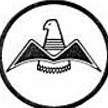-
Posts
12,154 -
Joined
-
Last visited
-
Days Won
170
Shadrach last won the day on December 11
Shadrach had the most liked content!

Shadrach replied to 201er's topic in Mooney Safety & Accident Discussion

Shadrach replied to 201er's topic in Mooney Safety & Accident Discussion

Shadrach replied to Sinclair51's topic in Mooney Safety & Accident Discussion

Shadrach replied to Yetti's topic in General Mooney Talk

Shadrach replied to Yetti's topic in General Mooney Talk

Shadrach replied to 201er's topic in Mooney Safety & Accident Discussion

Shadrach replied to DXB's topic in Mooney Safety & Accident Discussion

Shadrach replied to DXB's topic in Mooney Safety & Accident Discussion

Shadrach replied to DXB's topic in Mooney Safety & Accident Discussion

Shadrach replied to cliffy's topic in Miscellaneous Aviation Talk
We have placed cookies on your device to help make this website better. You can adjust your cookie settings, otherwise we'll assume you're okay to continue.